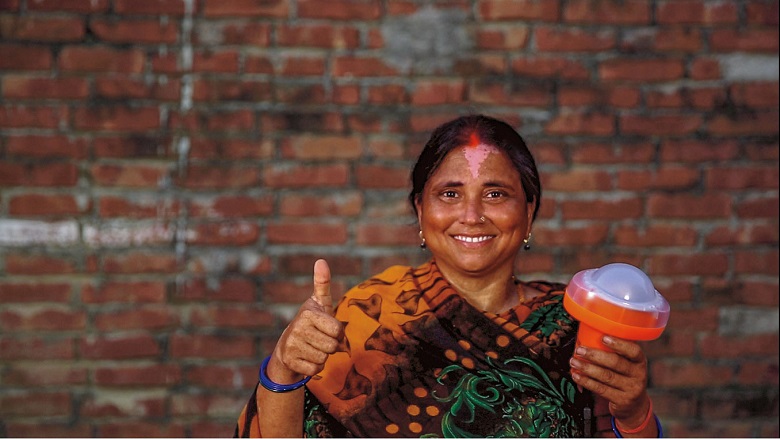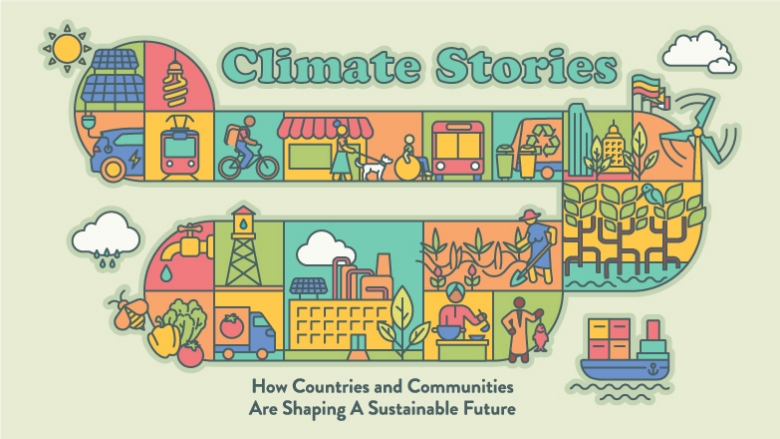Climate Co-Benefits or Climate Finance
What:
Why: Addressing climate change is critical to alleviate poverty and support sustainable development. Climate co-benefits (climate finance) has been an essential metric to measure how much of the Bank’s finance supported climate action.
Who: Virtually all Bank Group clients, both public and private, have financing with climate co-benefits and this has been growing over time.
How: As part of the new Climate Change Action Plan, 35% of total Bank Group financing over the next 5 years will go to support investments in adaptation and mitigation for our clients. This represents a big step up from the 26% that was achieved over the past five years (over $83 billion from 2016-20), especially given the economic development and per capita income levels of clients and the challenging COVID-19 recovery context.
Learn More: Climate Co-Benefits
Where: See for instance, Malawi, Bangladesh, Tunisia, Sierra Leone, Pakistan, Vietnam.
Concessional Finance
What: Concessional finance is below-market-rate finance provided by major financial institutions, such as development banks and multilateral funds, to developing countries to accelerate development objectives.
Why: Concessional finance targets high-impact projects responding to globally significant development challenges – from climate change mitigation and resilience to vaccine deployment, water sanitation and education - that otherwise could not go ahead without specialized financial support
Who: Developing countries that do not have enough of their own capital, nor access to reasonably priced loans.
How: Concessional finance works best when it is used alongside long-term strategic engagement and technical assistance with a country; and, when done well, it can create game changing, sector transforming results.
Learn More: Concessional Finance
Where: See for instance, Egypt; India; Maldives; Morocco
Emission Reductions Payment Agreements (ERPA)
What: ERPAs are legally binding contracts that allow one party to deliver carbon credits to another.
Why: The Climate Change Fund Management Unit at the World Bank uses ERPAs to support programs that preserve forests, reduce the use of dirty fuels, and increase the uptake of renewable energy.
Who: For the World Bank, ERPAs generally involve a government or business in a developing country selling carbon credits to the World Bank’s trust funds.
How: For example, in Mozambique where 43% of the country is covered by natural forests, the Zambézia Integrated Landscape Management Program aims to reduce deforestation and forest degradation while improving the lives of rural populations in nine districts. The program will provide results-based payments for emission reductions, with the goal of reducing 10 million tons of carbon emissions by 2024.
Learn More: ERPAs.
Where: See for instance, Ghana, Mozambique, Madagascar.
Green Loans
What:
Why: Green loans can help finance the transition to a low-carbon economy, but developing countries currently account for just $1.6 billion of the estimated $33 billion in outstanding green loans. With climate a strategic pillar of IFC’s work, the institution is committed to growing its climate-related investments, including in green loans.
Who: IFC is the leading provider of green loans among international development banks and has provided green loans in several countries.
How: In 2018, IFC adopted Green Loan Principles specifying that 100% of the proceeds from green loans should be used only for green-eligible activities. IFC works with clients to develop a Green Finance Framework for projects being financed by green loans.
Learn More: Green Loans
Where: See for instance: Brazil, Mexico, South Africa
Resilience Rating System
What:
Why: Decision-makers and investors need easy-to-process information about the resilience of projects to include in their own decision-making process. The rating system aims to create incentives to integrate climate risk early in project design and thereby build more robust communities, saving lives and money.
Who: The rating system was launched for World Bank projects as a pilot program in 2021 and can be adapted for other development banks, governments, local authorities, and the private sector.
How: Projects are appraised and given a rating of A, B or C. The simple rating system is designed to make the results of complex methodology clearly understandable to the non-expert. The assessment can be done at a project’s early stages, enabling teams to make changes that bring their projects to a high rating.
Learn More: Resilience Rating System
Sustainable Development Bonds
What:
Why: The findings of the new report by the Intergovernmental Panel on Climate Change drive home the urgency of climate action and also threaten the World Bank’s goals of reducing poverty and boosting shared prosperity. Sustainable development bonds communicate the positive impact of the World Bank’s full range of sector and project lending—all of which incorporate climate considerations.
Who: Buyers include big institutional investors such as central banks, pension funds, asset managers and bank treasuries; the World Bank may at times issue bonds aimed at individual investors via dedicated networks.
How: The World Bank Treasury works with banks and investors to raise about US$50-$60 billion per year through issuing hundreds of bonds; the bonds have the highest rating, triple-A, giving investors safety and a financial return while their investments support development in emerging countries
Learn More: Sustainable Development Bonds
Where: See for instance: Botswana, Colombia, Georgia, India, Suriname
IFC Green Bonds
What:
Why: A lot of financing is needed to address climate change and environmental challenges. Green bonds help channel finance from capital markets and investors to green projects and sustainable development.
Who: IFC is a green bond pioneer in a market that is growing quickly in response to strong demand from investors seeking a platform to engage in good practices while hedging climate risks.
How: IFC’s AAA-rated green bonds program combines an attractive investment proposition with an opportunity to support climate-related projects in developing and emerging economies. IFC also supports green bonds in multiple currencies as well as private sector green bonds to unlock finance for climate-smart projects and support the transition to a green economy.
Learn More: IFC Green Bonds


